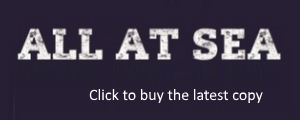Pubey
Guest
Was thinking the other day about Uber and how it's changing taxis and stuff.
Would an Uber business model be viable for parcel delivery/couriering etc?
- Let's say that every city has a couple of depots, and every town has 1.
- You get home from work and know you're going to be in for an hour - you can pay to have that parcel delivered within the hour from the depot
- Let's say you're in from work and know you're going to be in all evening - you can pay (less) to have that parcel delivered in the evening.
- Let's say you're a company, with 9-5 reception. You can therefore receive parcels at any time during those hours.
- Delivery drivers can accept jobs (develop their own route or accept jobs within a certain delivery area) and a sat nav system can ensure that they only accept jobs which are feasible. They then drive to the depot, collect the parcel(s) and deliver them, getting paid for the service.
- Delivery drivers require minimal training or anything, just a car and insurance. Members of the public could in theory become delivery drivers very easily if they so wish. Download an app, prove they have insurance (maybe additional insurance required), start courier-ing.
- A standard logistics system remains for bringing in shipments from abroad and moving them to the nearest depot.
- System works in reverse for collection too.
Seems like a much better system, but what are the flaws?
If anyone wants to steal my idea then fine - I come up with about 100 a day:winking:
Would an Uber business model be viable for parcel delivery/couriering etc?
- Let's say that every city has a couple of depots, and every town has 1.
- You get home from work and know you're going to be in for an hour - you can pay to have that parcel delivered within the hour from the depot
- Let's say you're in from work and know you're going to be in all evening - you can pay (less) to have that parcel delivered in the evening.
- Let's say you're a company, with 9-5 reception. You can therefore receive parcels at any time during those hours.
- Delivery drivers can accept jobs (develop their own route or accept jobs within a certain delivery area) and a sat nav system can ensure that they only accept jobs which are feasible. They then drive to the depot, collect the parcel(s) and deliver them, getting paid for the service.
- Delivery drivers require minimal training or anything, just a car and insurance. Members of the public could in theory become delivery drivers very easily if they so wish. Download an app, prove they have insurance (maybe additional insurance required), start courier-ing.
- A standard logistics system remains for bringing in shipments from abroad and moving them to the nearest depot.
- System works in reverse for collection too.
Seems like a much better system, but what are the flaws?
If anyone wants to steal my idea then fine - I come up with about 100 a day:winking:













